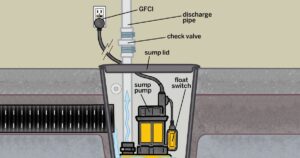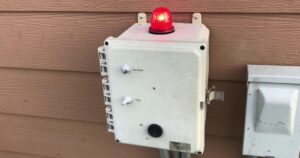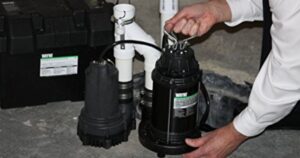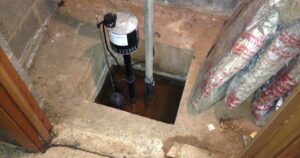Discover the possibilities of finishing your basement with a sump pump! Are you curious about how to transform your damp and unused space into a functional and inviting area? In this informative article, we will delve into the world of sump pump basement finishing. From assessing moisture levels to managing humidity, we will provide you with expert guidance and tips to create a space that not only adds value to your home but also enhances your sense of belonging.
Key Takeaways
- Thoroughly inspect the basement for signs of water infiltration, such as damp spots, water stains, or puddles.
- Install a sump pump to mitigate moisture issues and prevent mold growth, dampness, and damage to materials.
- Choose flooring materials that are durable, water-resistant, and prevent mold or mildew growth.
- Manage humidity and ventilation in the finished basement by using dehumidifiers, proper ventilation, insulation, and vapor barriers.
Assessing Your Basement’s Moisture Levels
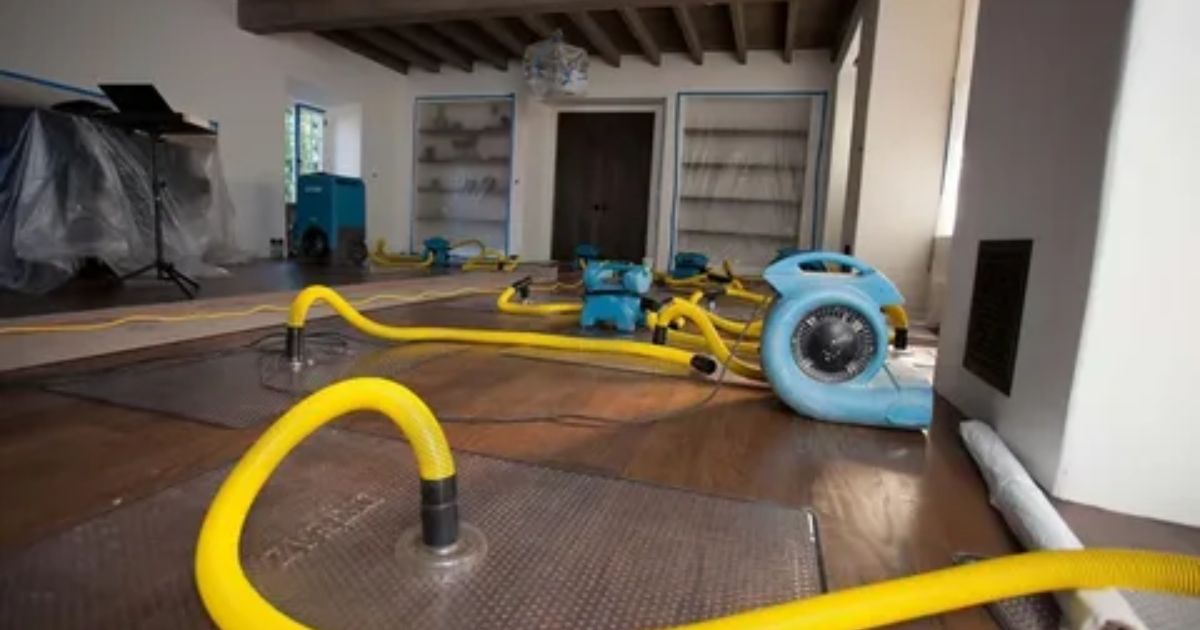
Before finishing a basement with a sump pump, it is essential to accurately assess the moisture levels in the space. Dump Water in My Sump Pump Moisture can be a significant concern in basements, as it can lead to mold growth, structural damage, and a generally unpleasant environment. To assess the moisture levels, it is recommended to conduct a thorough inspection of the basement. Look for signs of water infiltration, such as damp spots, water stains, or puddles.
Measure the humidity levels using a hygrometer to determine if there is excessive moisture in the air. Additionally, check for condensation on windows or pipes, as this can indicate high humidity levels. Understanding the moisture levels in your basement is crucial for determining the appropriate steps to take in finishing the space and ensuring the effectiveness of a sump pump system.
Now that we have assessed the moisture levels in the basement, it is important to understand the role of a sump pump in basement finishing.
Understanding the Role of a Sump Pump in Basement Finishing
A sump pump plays a crucial role in basement finishing, as it effectively mitigates moisture issues by removing excess water from the space. When finishing a basement, it’s important to address any existing or potential moisture problems. Moisture can seep into basements through cracks in the foundation, leaks in plumbing, or high humidity levels. This can lead to mold growth, dampness, and damage to the finished materials.
A sump pump helps prevent these issues by collecting water that accumulates in the basement and pumping it out to a designated area away from the foundation. It acts as a reliable safeguard against flooding and excess moisture, ensuring a dry and comfortable living space. By installing a sump pump, you can confidently proceed with finishing your basement knowing that moisture problems are being effectively addressed.
Waterproofing Solutions for Basement Walls and Floors
To effectively address moisture issues in a basement finished with a sump pump, it is essential to consider waterproofing solutions for the walls and floors. Basement walls and floors are prone to water seepage and moisture intrusion, which can lead to mold growth, structural damage, and an unhealthy living environment. One of the most common waterproofing methods is the application of a waterproofing membrane or coating on the walls and floors.
This creates a barrier that prevents water from entering the basement. Additionally, installing a drainage system, such as a French drain or a perimeter drain, can help divert water away from the foundation walls and into the sump pump system. It is also crucial to ensure proper grading and landscaping around the foundation to prevent water accumulation and seepage. By implementing these waterproofing solutions, homeowners can create a dry and habitable basement space.
Choosing the Right Flooring Materials for a Sump Pump Basement
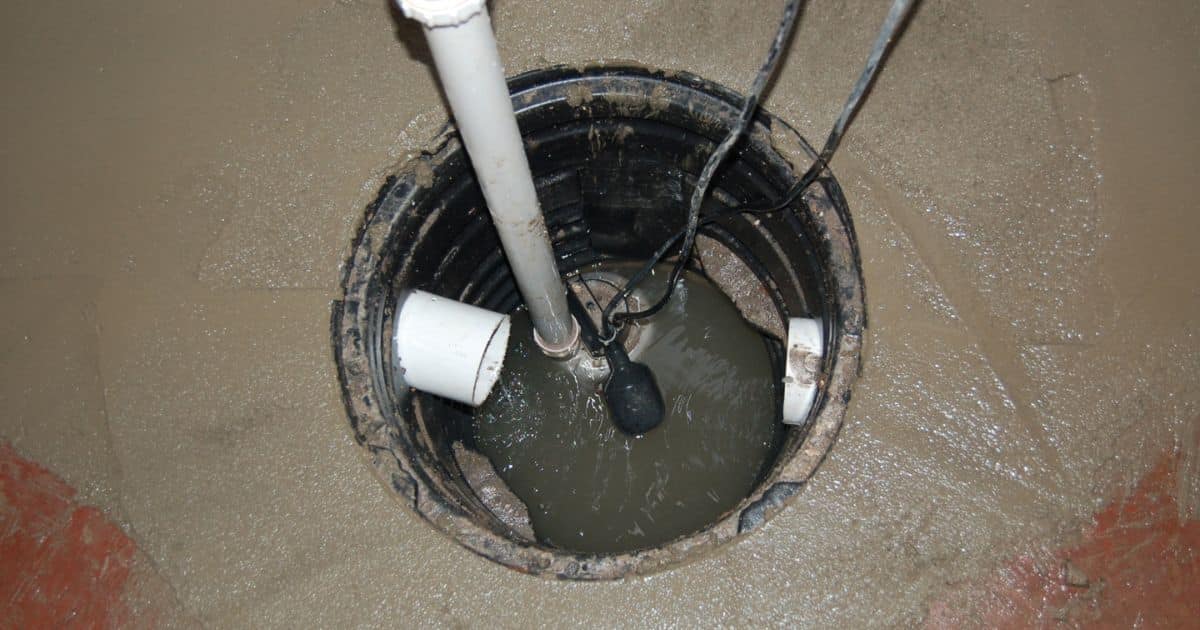
Selecting appropriate flooring materials is crucial for a basement finished with a sump pump. Since basements are prone to moisture, it is important to choose flooring options that can withstand potential water damage and prevent the growth of mold or mildew. One popular choice is ceramic or porcelain tile, which is durable, water-resistant, and easy to clean. Another option is luxury vinyl plank flooring, which mimics the look of hardwood but is more resistant to moisture. Additionally, epoxy coatings can provide a seamless and waterproof surface that is resistant to stains and easy to maintain, especially beneficial in areas prone to water exposure, such as a basement with a sump pump. When choosing flooring materials, it is essential to consider both functionality and aesthetics to create a comfortable and inviting space. Transitioning to the next section, managing humidity and ventilation in a finished basement is equally important for maintaining a healthy environment.
Managing Humidity and Ventilation in a Finished Basement
When finishing a basement with a sump pump, it is crucial to effectively manage humidity and ventilation to ensure a healthy and comfortable environment. Basements are prone to high humidity levels due to their location below ground level. Excess moisture can lead to mold growth, musty odors, and even structural damage. To manage humidity, it is important to install a dehumidifier that can effectively remove excess moisture from the air. Additionally, proper ventilation is essential to circulate fresh air and prevent stagnant conditions. This can be achieved through the installation of windows, vents, or exhaust fans. It is also important to ensure that any insulation or vapor barriers are properly installed to prevent moisture from seeping into the basement. By effectively managing humidity and ventilation, a finished basement can provide a comfortable and healthy living space for the homeowners.
Hiring Professionals for Sump Pump Basement Finishing
Professional assistance is highly recommended when it comes to finishing a basement with a sump pump, as their expertise ensures a seamless and efficient process. Hiring professionals for sump pump basement finishing can provide numerous benefits and ensure a high-quality outcome.
Firstly, professionals have the necessary knowledge and experience to assess the condition of your basement and determine the best course of action. They can identify any potential issues or challenges that may arise during the finishing process and develop effective solutions.
Additionally, professionals have access to specialized tools and equipment that are essential for a successful basement finishing project. They can handle the installation and maintenance of the sump pump system, ensuring that it is properly integrated into the overall design of the basement.
Moreover, professionals are well-versed in building codes and regulations, ensuring that your finished basement meets all safety and compliance standards. They can obtain the necessary permits and navigate any inspections that may be required.
FAQ’s
What Are the Signs That Indicate a High Moisture Level in a Basement?
Signs of high moisture levels in a basement include musty odors, visible mold or mildew growth, damp or wet walls and floors, condensation on windows or pipes, peeling paint or wallpaper, and water stains.
Can a Sump Pump Be Installed in Any Type of Basement?
Yes, a sump pump can be installed in any type of basement. It helps remove excess water and prevents flooding, making it possible to finish the basement without worrying about moisture issues.
How Often Should a Sump Pump Be Inspected and Maintained?
Sump pumps should be inspected and maintained regularly to ensure their proper functioning. The frequency of inspections may vary depending on factors such as the age of the pump and the groundwater levels in the area.
Are There Any Alternative Solutions to Waterproofing Basement Walls and Floors?
There are alternative solutions available for waterproofing basement walls and floors. These solutions can provide effective protection against water damage, ensuring a dry and usable space.
What Are the Potential Risks of Not Properly Managing Humidity and Ventilation in a Finished Basement?
Not properly managing humidity and ventilation in a finished basement can lead to mold and mildew growth, which can cause health issues such as respiratory problems and allergies. It can also damage the structure and decrease the value of the property.
Conclusion
In conclusion, finishing a basement with a sump pump requires careful consideration of moisture levels, waterproofing solutions, flooring materials, humidity management, and ventilation. It is crucial to hire professionals who have expertise in sump pump basement finishing to ensure a successful and long-lasting result. With proper planning and execution, a sump pump basement can provide a functional and comfortable living space that is protected from moisture issues.

